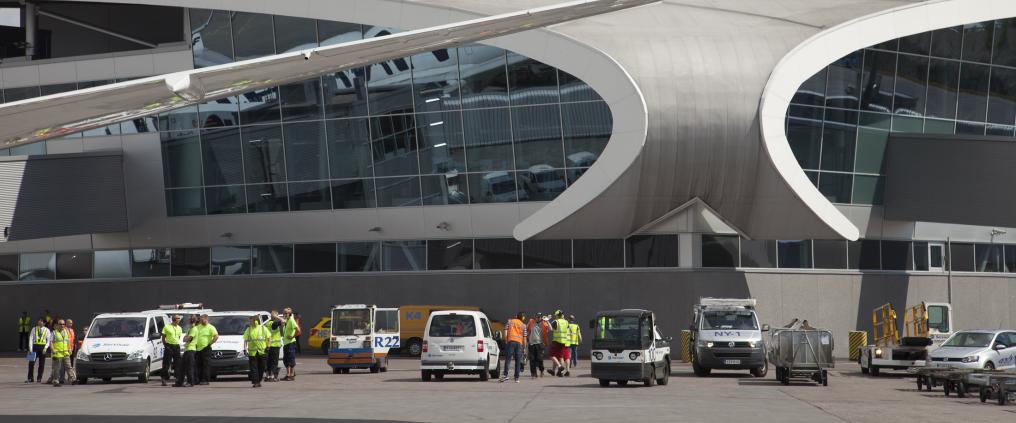Airplanes, buses, maintenance and catering vehicles, luggage carts. During rush hour, there can be hundreds of vehicles on the apron – the area where aircraft is parked, loaded or unloaded, refuelled, or boarded.
All vehicles and people going to the apron area undergo security checks, and both the vehicles and the drivers need their own permit to access the area.
Every driver has been educated by Finavia, since regulations on the apron are precise and traffic rules can differ from regular ones. For example, aircraft always have the right of way, and the safe distance to an aircraft depends on the situation and the size of the aircraft.
If something out of the ordinary happens on the apron, the first person to arrive is a Finavia Marshaller.
“The Marshallers at Helsinki Airport are responsible for the control of vehicle traffic on the entire apron, as well as guiding aircraft to the right parking locations,” says Sami Simola, Finavia’s Head of Apron Services.
Finavia grants driving permits
The basic requirement for an apron driving permit is a B class driving license, airport ID card and a job where frequent driving on the apron is needed.
There are currently over 4,000 people with a permit, and the number is steadily increasing, as companies at Helsinki Airport employ more people to meet the needs of increasing air traffic.
“The driving permit process starts with an online course on general apron traffic rules. An applicant then needs to get a minimum of 80 % correct in the theory test to be able to proceed to the driving lessons. To have access to the whole apron area requires a minimum of four driving lessons before the driving exam, given by Finavia’s Apron Services Ground traffic instructor,” Simola continues.
Construction traffic minimised during rush hours
The busiest times on the apron are during morning, afternoon and evening peak hours.
“During quieter hours, planes are being taxied, maintained and cleaned, for example. Even in the small hours of the morning, charter planes, cargo aircraft and business aircraft use the apron,” Simola says.
As part of the Helsinki Airport development programme, the apron is being renovated during the summer seasons in 2018–2020. An additional challenge comes from apron traffic to construction sites at the expanding airport.
“To minimise the effect to flight traffic during busy hours, there are certain time slots for construction site traffic.”
Safety in every weather
Traffic rules at the apron can change according to weather. In bad weather, good lighting and traffic signs become ever more important.
“In difficult conditions like snow storms, the speed limit at the apron can be lowered from 30 km/h to 20 km/h by lighting up the Weather Alert signs,” Simola says.
Snow is a normal element at Helsinki Airport, and Marshallers together with Apron Control are used to coordinating the movement of vehicles when it’s time to make room for snowplough drivers to do their job.
Finavia’s environmental work is visible at the apron where vehicles are becoming increasingly electric or use renewable fuels. Finavia supports the shift towards fewer emissions by building charging station infrastructure for electric vehicles at the airport.
“For example, the Follow Me cars that guide aircrafts to their parking spots run with electricity. To ensure that operations run smoothly, the cars are hybrids, using their internal combustion engine if needed. This ensures safety also in cases where Marshallers have continuous tasks for a long period, and don’t have time to leave the car to charge in between,” Simola concludes.
Watch a video about Finavia’s corporate responsibility – the Sum of Good things.




